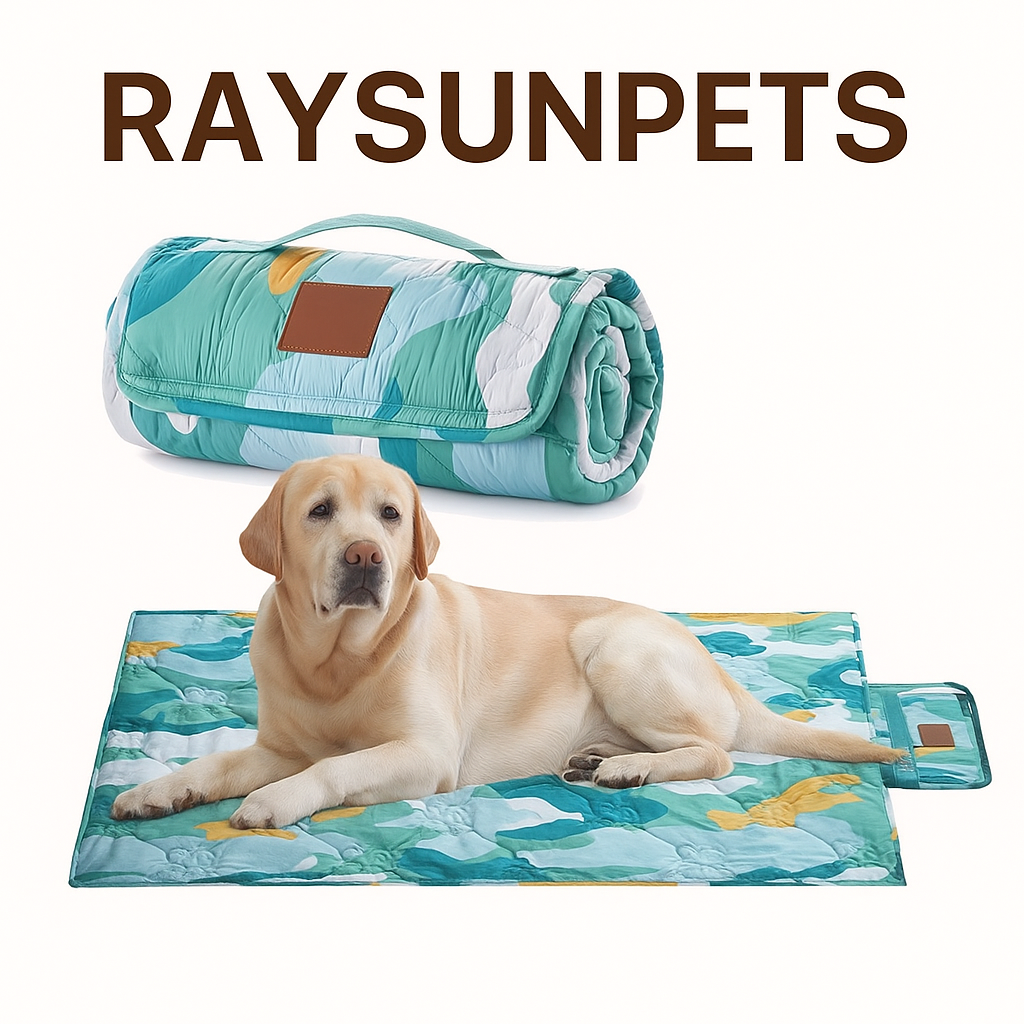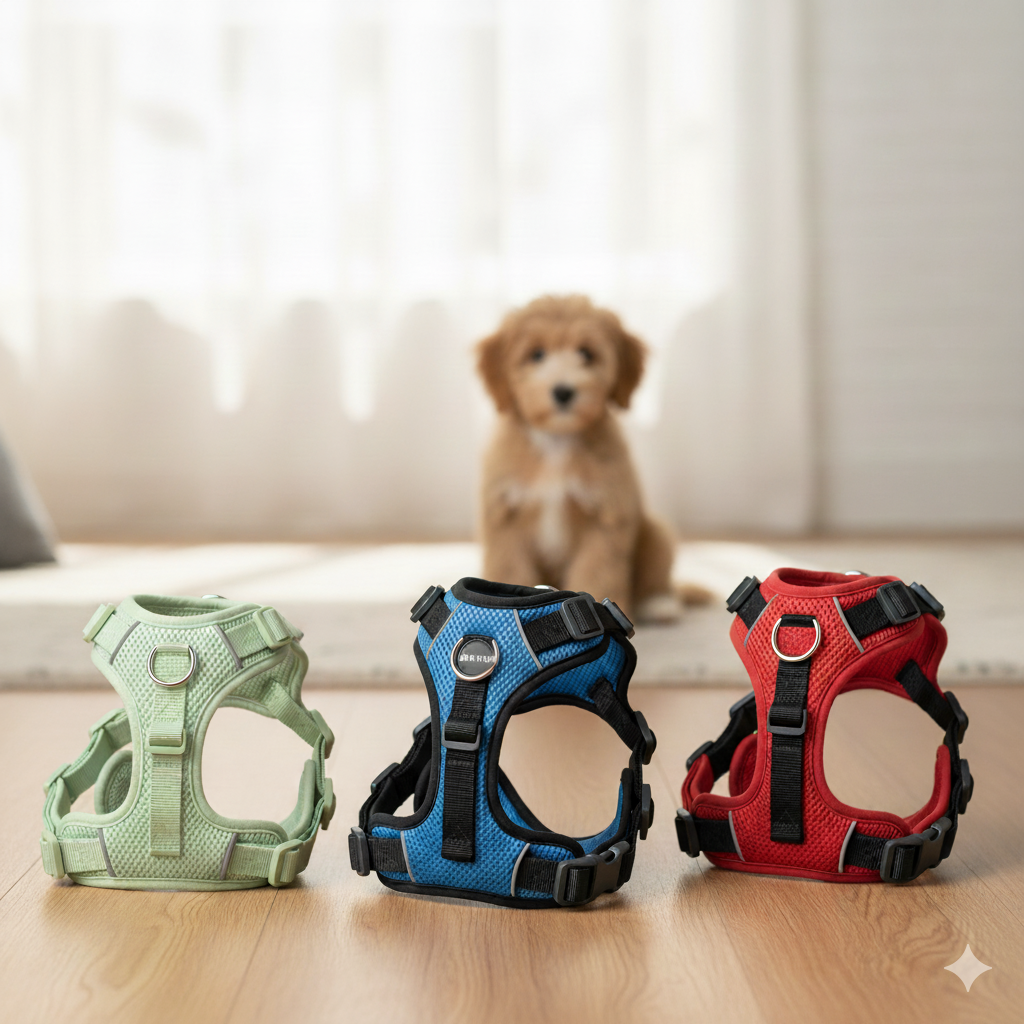You love the convenience of your dog's harness. It's perfect for walks. Taking it off seems like a hassle, so you wonder if it would be so bad to just leave it on.
No, you should not leave a harness on your dog 24/7. Continuous wear can lead to serious skin irritation, painful fur matting, and chafing. It also poses a significant safety risk if the dog gets snagged on something while unsupervised.
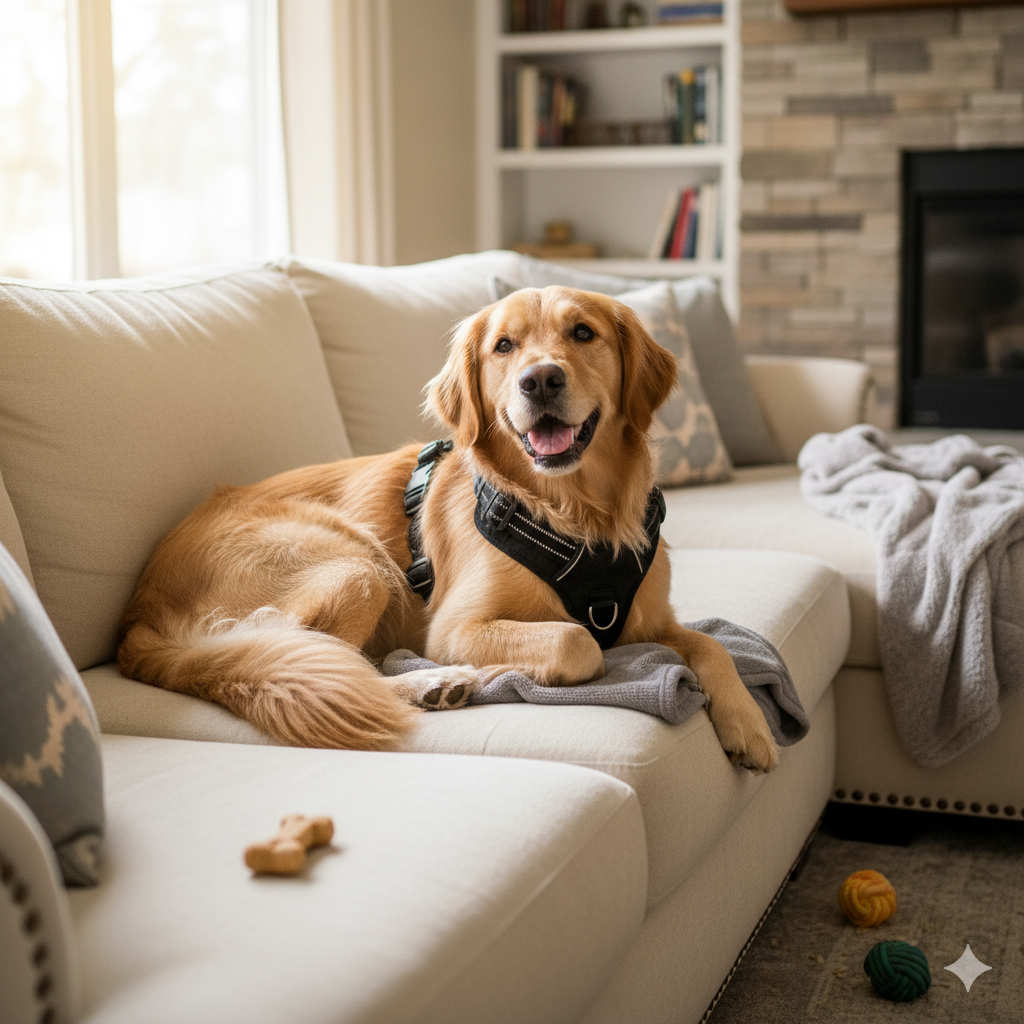
As a dog gear designer, I think a lot about the intersection of function, comfort, and safety. A harness is a fantastic tool for a specific purpose: connecting you to your dog during an activity. But it’s just that—activity gear. It’s like wearing your hiking boots around the house. You could do it, but it wouldn't be comfortable, and it's not what they were designed for. Let's look at the specific reasons why a harness should come off when your dog comes inside.
What Are the Biggest Health Risks of Constant Harness Use?
Your dog seems perfectly fine wearing their harness around the house. You might think it's not a problem. But under that fabric, hidden issues could be developing that you can't see.
The biggest health risks are skin-related. Constant pressure and friction can cause chafing and sores, especially in sensitive areas like the "armpits." Trapped moisture can also lead to nasty skin infections, while matted fur can form under the straps on long-haired dogs.
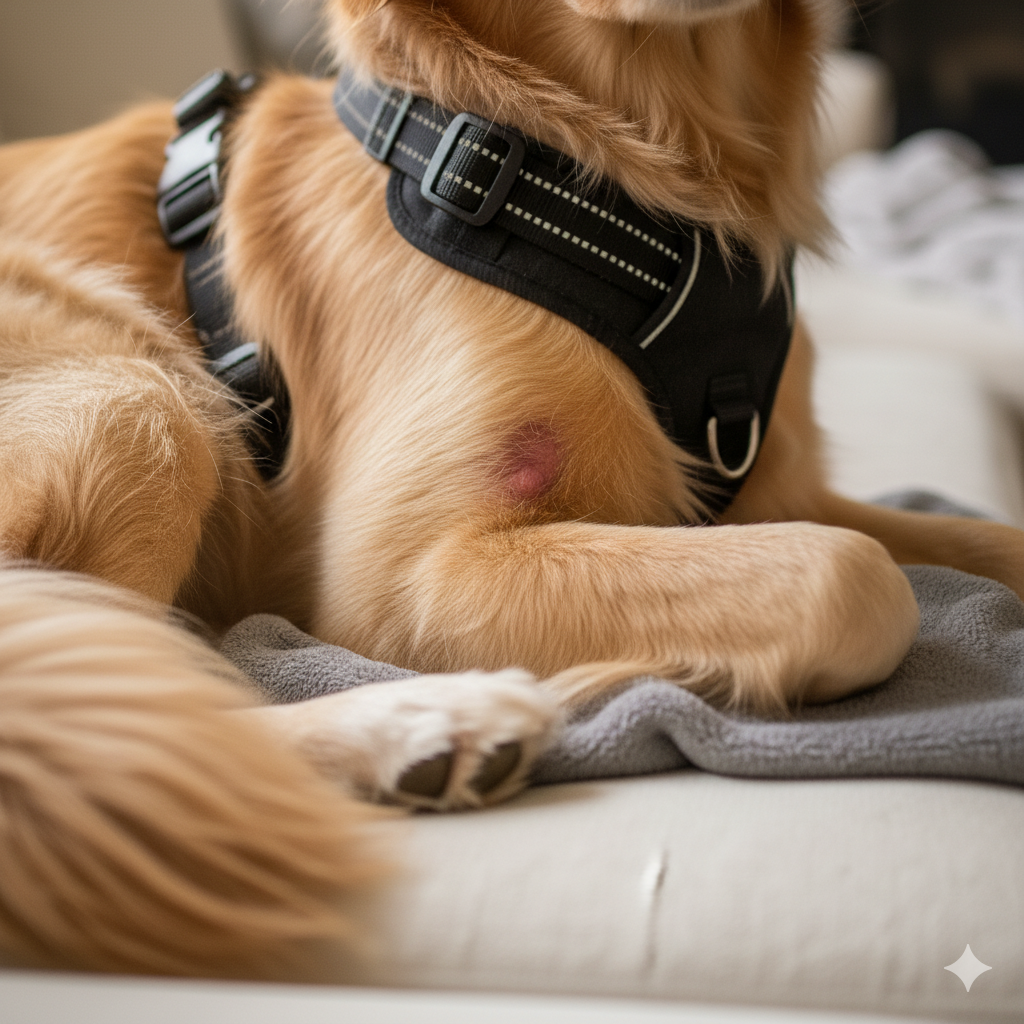
When I'm designing a harness, my team and I spend hours choosing materials and refining the ergonomics to minimize friction during movement. But no design can eliminate it entirely. Think about wearing a backpack all day and night. Eventually, the straps would start to rub your shoulders raw. It's the same for a dog. The areas where the straps meet the body are points of constant, low-level friction.
Another major issue is moisture. Most harnesses are made from synthetic materials like nylon or polyester, which aren't very breathable. They can trap moisture from sweat, rain, or a dip in a puddle. This creates a warm, damp environment against the skin—the perfect breeding ground for bacteria and yeast, which can lead to painful skin infections known as hotspots.
Coat Type and Associated Risks
| Coat Type | Primary Risk of Constant Wear | Why It Happens |
|---|---|---|
| Short, Fine Coat (e.g., Vizsla) | Chafing and Sores | Less fur to cushion the skin from strap friction. |
| Thick Double Coat (e.g., Husky) | Moisture Trapping & Hotspots | The dense undercoat holds moisture against the skin. |
| Long, Silky Coat (e.g., Golden Retriever) | Painful Fur Matting | Straps press and tangle the fur, creating tight knots. |
| Wiry Coat (e.g., Terrier) | Skin Irritation | Coarse hair can be broken or forced into the skin. |
The simple act of removing the harness allows the skin and fur to dry and breathe, preventing most of these painful problems before they start.
Can Leaving a Harness On Be a Safety Hazard?
Your dog is inside, so you feel they're safe. The harness seems harmless. You wonder if it could really become a danger when they are just relaxing at home or in their crate.
Yes, an unwatched harness is a serious safety hazard. A dog can get a strap caught on a piece of furniture, a floor vent, or the bars of their crate. This can cause panic, leading to broken bones, or worse, strangulation.
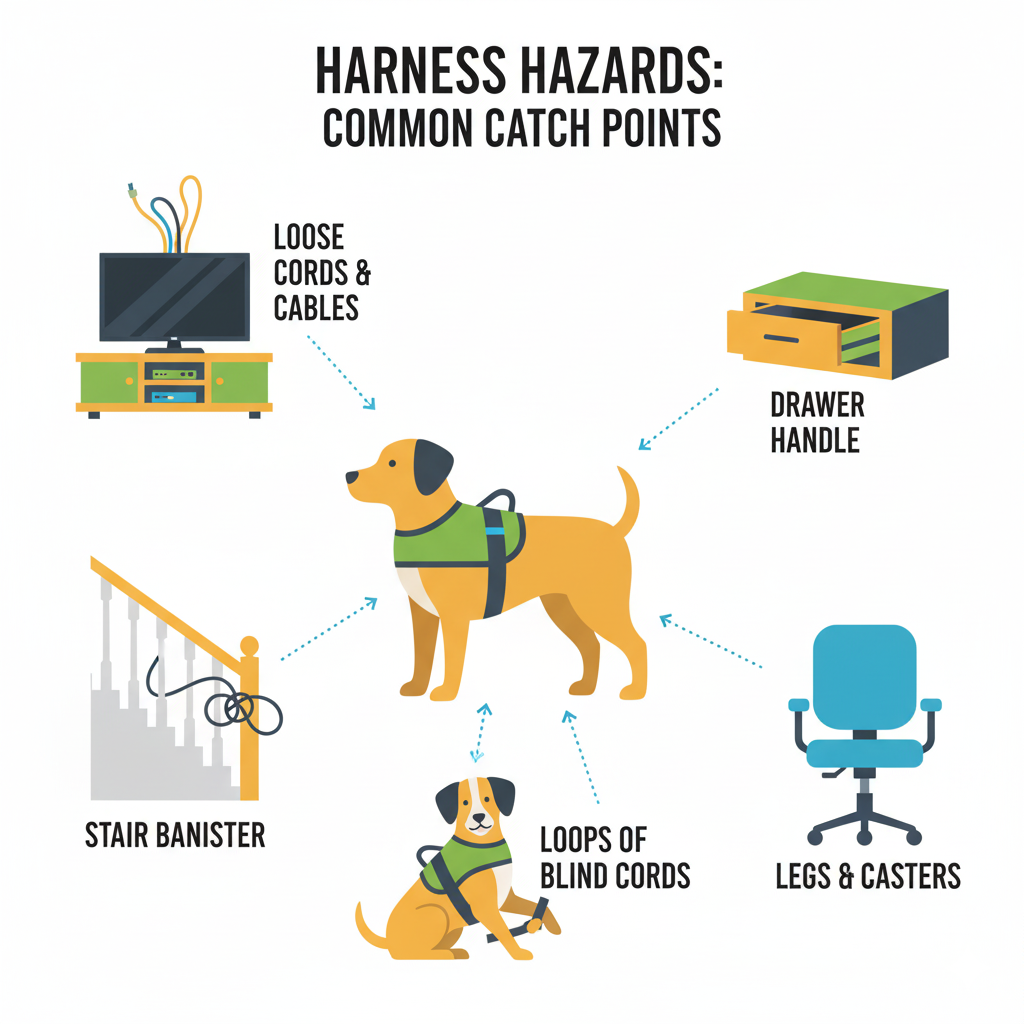
This is the kind of thing that keeps product designers up at night. We design for intended use, but we also have to consider misuse. Leaving a harness on an unsupervised dog is a major 'misuse' scenario. I once heard a story from a veterinarian about two dogs playing at home. One dog got its lower jaw caught in the other dog's harness strap. The more they panicked and struggled, the worse it got. It resulted in a broken jaw and a trip to the emergency vet. These are freak accidents, but they are entirely preventable.
Even the snugness of the fit can become a problem. As a dog moves, lies down, and rolls around, a strap can shift. A leg can get caught through a chest strap, creating a dangerous situation.
Common Household Snag Hazards
| Household Item | Potential Hazard | How It Happens |
|---|---|---|
| Crate/Kennel Wires | Entrapment, Strangulation | Buckles or straps get caught between the bars. |
| Furniture Legs | Entrapment, Panic | Handle or loose strap hooks around a leg of a chair or table. |
| Heating Vents | Limb Injury | A strap slips into a vent grate, trapping the dog. |
| Doorknobs | Panic, Entrapment | The back handle of a harness can easily loop over a low doorknob. |
| When Playing | Jaw Injury | Another dog’s teeth or jaw can get twisted in a strap. |
Your home should be your dog's safest place. Removing the harness when you're not actively using it is a simple but critical step to keep it that way.
How Do I Know if My Dog's Harness Is Causing Problems?
You take the harness off occasionally and everything looks fine. But dogs are good at hiding pain. You want to be completely sure you aren't missing any subtle warning signs of discomfort.
You need to perform daily checks. When you remove the harness, look for any redness, hair loss, or sores under the strap lines. Run your fingers through their fur to check for the beginnings of mats. Also, watch your dog's behavior for clues.
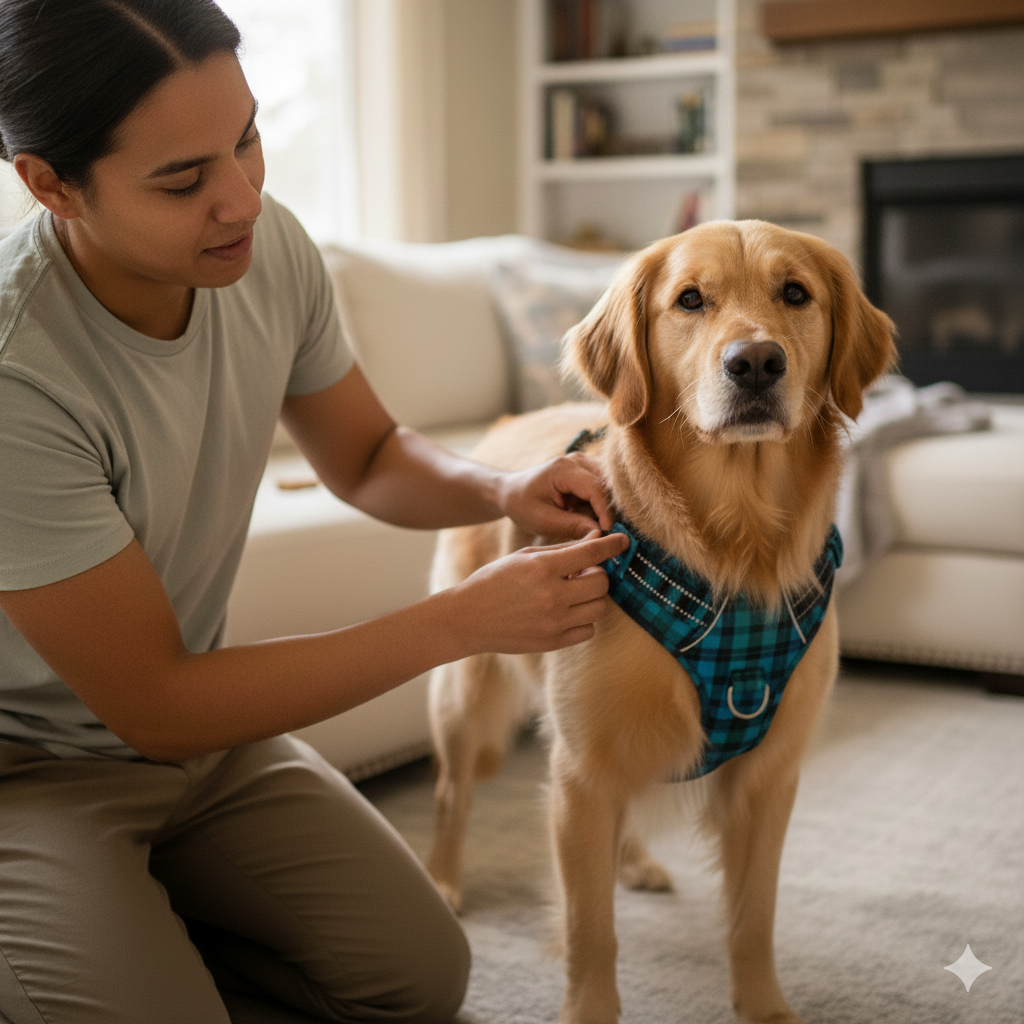
A physical check is the most direct way to find problems. It should become part of your daily routine, just like taking off your own shoes and socks at the end of the day. It only takes 30 seconds. Lift every strap and look at the skin underneath, especially in the armpits and across the chest. These high-movement areas are the most common spots for chafing. For dogs with longer coats, don't just look—feel. Use your fingers or a comb to gently check for any tangles or tight mats that have formed along the strap lines. Finding a small tangle early is much easier than dealing with a large, painful mat later.
Your dog’s body language is also a huge source of information. Are they suddenly scratching at the harness? Do they seem reluctant to let you put it on? Do they flinch or seem stiff when you touch them in a certain spot after a walk? These are not signs of a "bad dog," but signals of potential pain or discomfort.
Your 30-Second Post-Walk Harness Check
- Remove the Harness: Take it off as soon as you get inside.
- Visual Scan: Look at all the areas the harness touched. Is there any redness or irritation?
- Feel the Fur: Run your hands over their coat. Does it feel smooth? Or are there tangles or mats?
- Check the "Armpits": Gently lift their front legs to inspect this sensitive area for any signs of chafing.
- Watch Their Reaction: Does your dog seem relieved? Do they immediately start to scratch or roll? This could be a sign of itchiness or irritation.
Conclusion
Treat your dog's harness like your own shoes. They are an essential tool for walks and adventures but should be removed indoors to allow your dog to rest safely and comfortably.
Cindy Long is the Sales Manager of Raysunpets and a pet lover with over 12 years of experience in exporting pet products. She specializes in providing customized dog chest carriers, leashes and pet accessory solutions for the European and American markets, always focusing on the real needs of customers and pets, and is committed to creating high-quality, practical and comfortable products that allow fur kids to live happier lives.

